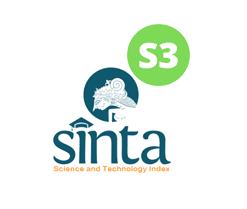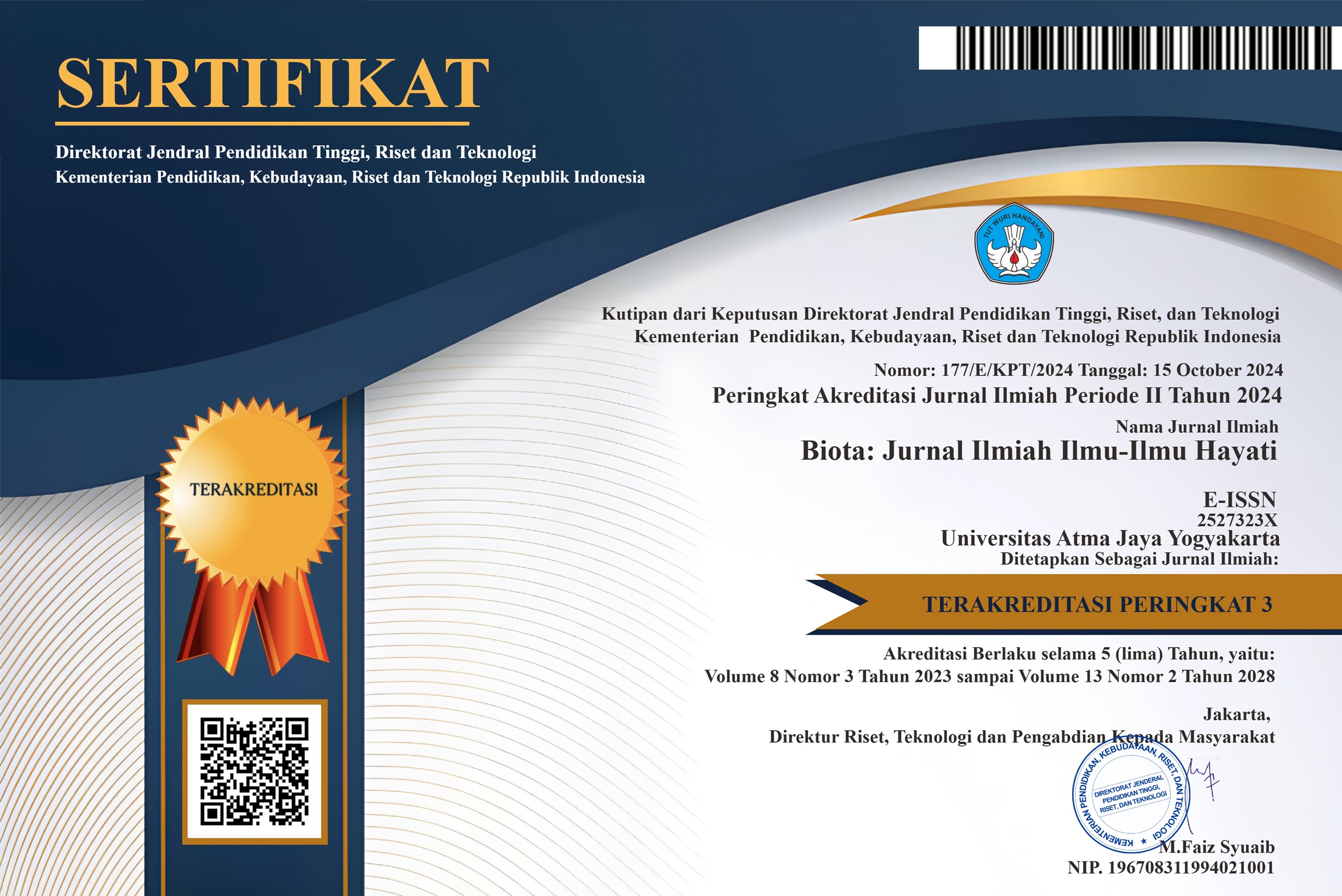Uji Antimikroba Fraksi Ekstrak Metanol, Etil Asetat dan n-Heksana Daun Tabar-Tabar (Costus speciosus) dan Toksisitasnya Terhadap Larva Udang
DOI:
https://doi.org/10.24002/biota.v15i1.2656Keywords:
Costus speciosus, antimicrobial activity, brine-shrimp, toxicityAbstract
A Study on antimicrobial examination of fractions of methanol, ethyl-acetate, and n-hexane extract of tabar-tabar (Costus speciosus) leaf to bacteria (Bacillus sp., Staphylococcus aureus, Escherichia coli, and Serratia marcescens) and yeast (Candida albicans), and their toxicity to brine-shrimp (Artemia salina) larvae has been done. Examination of antimicrobial activities to the microbes were done by agar diffusion method, while test for toxicity was done by exposing 2 days-old larvae to certain concentration of the extract. Preliminary tests on phytochemical compounds in leaf were done by Mayer’s, FeCl3, Mg-HCl, foam, and 10% NaOH in methanol tests. The results showed that methanol leaf extract of tabar-tabar in general inhibited more in the growth of gram-positive Bacillus sp. and S. aureus rather than to other tested microbes. Compared to methanol and ethyl-acetate fraction, n-hexane fraction of the leaf inhibited more Bacillus sp. and E. coli. Interestingly, C. albicans was highly inhibited by n-hexane fractions. LC50 of methanol extract, ethyl-acetate, and n-hexane fraction, were 45.53, 478.37, and 824.20 ppm, respectively. Preliminary test on phytochemical compounds showed saponin was only detected in fractions of methanol and ethyl acetate extracts, steroid was detected in fraction of methanol, while triterpenoid was detected in fraction of n-hexane extract. Phenolic was detected in all extract fractions, while flavonoid, kumarin, and alkaloid on the other hand were not detected.Downloads
Published
22-10-2019
How to Cite
Suryanto, D., Kelana, T. B., & Wahyuni, S. (2019). Uji Antimikroba Fraksi Ekstrak Metanol, Etil Asetat dan n-Heksana Daun Tabar-Tabar (Costus speciosus) dan Toksisitasnya Terhadap Larva Udang. Biota : Jurnal Ilmiah Ilmu-Ilmu Hayati, 15(1), 118–125. https://doi.org/10.24002/biota.v15i1.2656
Issue
Section
Articles
License
Authors who publish with Biota : Jurnal Ilmiah Ilmu-Ilmu Hayati agree to the following terms:
- Authors retain copyright and grant the Biota : Jurnal Ilmiah Ilmu-Ilmu Hayati right of first publication. Licensed under a Creative Commons Attribution-NonCommercial 4.0 International License that allows others to share the work with an acknowledgment of the work's authorship and initial publication in this journal.
- Authors are able to enter into separate, additional contractual arrangements for the non-exclusive distribution of the journal's published version of the work (e.g., post it to an institutional repository or publish it in a book), with an acknowledgment of its initial publication in Biota : Jurnal Ilmiah Ilmu-Ilmu Hayati, and as long as Author is not used for commercial purposes.












